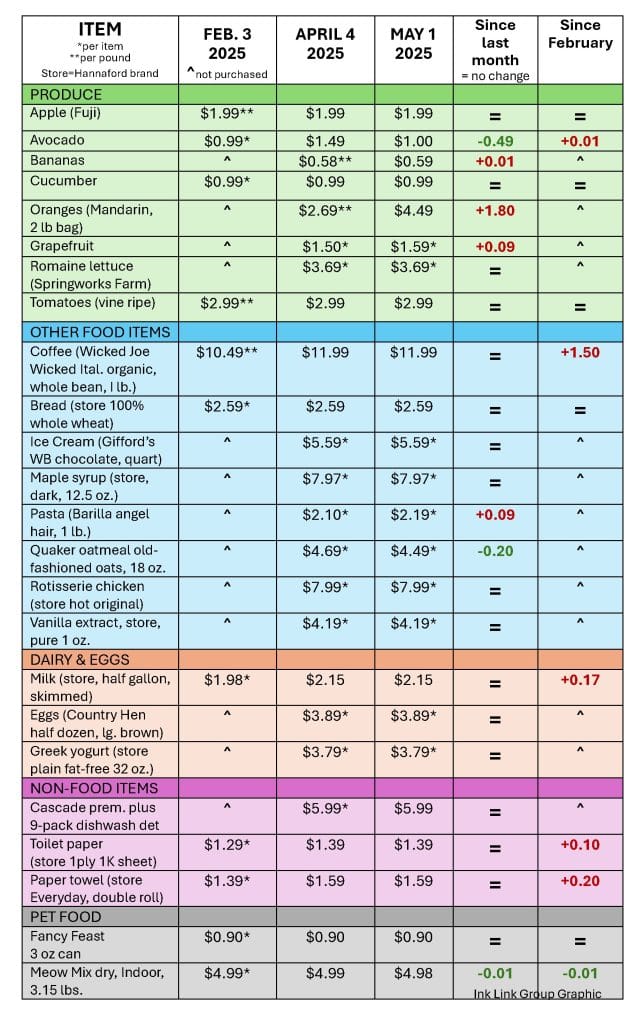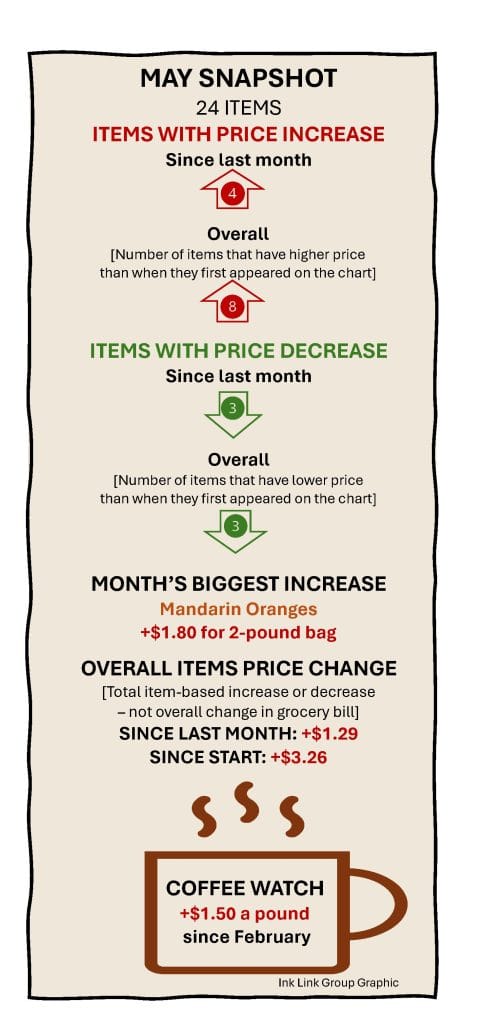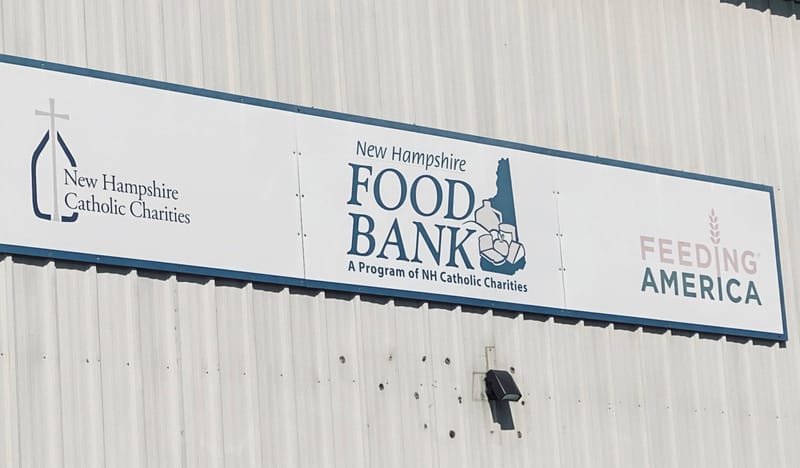May Grocery Snapshot: Avocados do a fruit loop
Prices for the fruit on my grocery list were up slightly since our last Grocery Snapshot in April, so was pasta. Some other products I have my eye on are holding steady. Let’s take a look at my Grocery Snapshot for May.

Prices for the fruit on my grocery list were up slightly since our last Grocery Snapshot in April, so was pasta. Some other products I have my eye on are holding steady. Let’s take a look at my Grocery Snapshot for May.
The biggest surprise? A 49 cent drop for an avocado. They were 99 cents apiece in February and March, but went up to $1.49 right after the April tariff announcement, when Mexico was going to be whacked with 25% across the board and there was some panic pricing. Some 88% of the avocados that come into the U.S. are from Mexico. The 25% for all Mexican imports was almost immediately pulled back. There’s no tariff on avocados, at least for now, so everyone breathed a big sigh of relief and the price relaxed.
Tomatoes, another big Mexican import, are holding steady, but that could change in a couple of months. In July, a 20.91% tariff will be imposed on Mexican tomatoes. About 86% of the tomatoes sold in the U.S. come from Mexico. The new tariff is designed to encourage stores to buy U.S.-grown tomatoes and coincides with our growing season. We’ll keep an eye on it. Even if the vine-ripe tomatoes I (or you) buy in the store are grown locally, or at least in the U.S., the price may go up as sellers try to fill the gap left by the expected increase in the Mexican product.
What was up?
The biggest increase of the month was oranges. I like to buy the two-pound bag of Mandarins, and it was up significantly.
Some of this spring’s price hike for oranges is seasonal – growing and selling season has ended. But it also is because Florida’s production of oranges was down 35% from the previous year, and the state had possibly its smallest crop in 95 years, according to the USDA National Agricultural Statistics Service (not all the numbers are in yet). Some of that has to do with damage from Hurricane Milton in October, some of it with a disease called citrus greening (huanglongbing), a bacterial infection that’s caused a 92% drop in Florida orange production over the past two decades. California is now the leading orange-producing state in the U.S., but Florida’s issues cause more of a demand for the California crop, which drives up prices across the board. Tariffs haven’t had much of an effect yet, though about 30% of the oranges sold in the U.S. are from Mexico, so that could be coming.
Pasta imported from Italy was also up slightly – 9 cents for a one-pound box of Barilla angel hair. Coffee, which rose $1.50 a pound between February and April, held steady, but I’m not holding my breath.
What we’re watching
Let’s keep an eye on maple syrup. Even maple syrup produced in the U.S. that’s sold in grocery stores is often processed in Canada, which means tariffs each way. [Full disclosure: I normally buy this from local producers at the farmers’ market, etc., so it wouldn’t be subject to tariffs, but for the sake of this experiment, I’m buying it at the store.] Stay tuned!
What this is: As consumers brace for the effect of Trump’s sweeping tariffs announced in February, paused, announced again in April, then pushed and pulled, we’re keeping an eye on how some grocery items on my regular list respond month-to-month.
This is just a snapshot of what’s happening, not a full analysis. A lot goes into price changes, including time of year, weather, store preference and many other elements besides tariffs. Prices listed are per item, or weight, not the total I paid, since that can fluctuate. For instance, a bunch of bananas doesn’t always weigh the same, and I don’t always buy the same amount, so the per-pound price is the best way to measure it. Prices listed are the “on shelf” price, not discounted by coupons or rewards.
I’ve included things likely to be affected by tariffs as well as some things that may or may not be. The brands reflected aren’t an endorsement, they’re just what I buy. I like a good cup of coffee (and apparently an expensive one), so we’re keeping an extra eye on that just for fun.
What this is not: This is not a science-based experiment, an in-depth analysis of price fluctuations or changes, a search for deals, or a comparison between prices at different stores. [It’s also not an advertisement for Hannaford, it’s just where I happen to shop].







